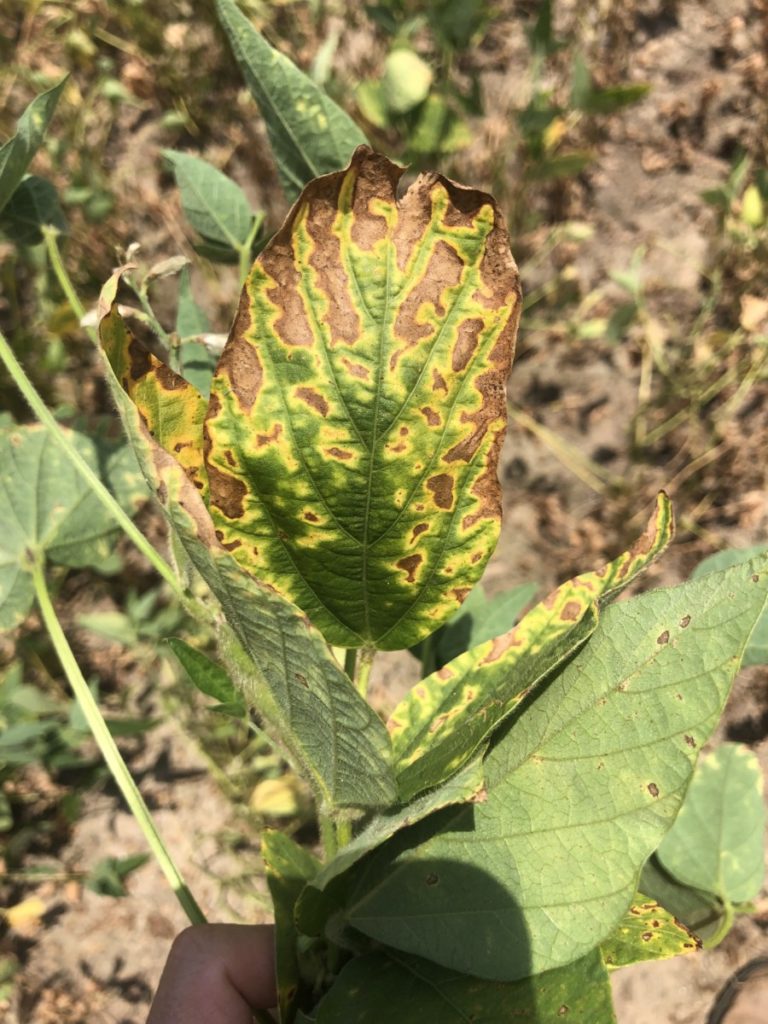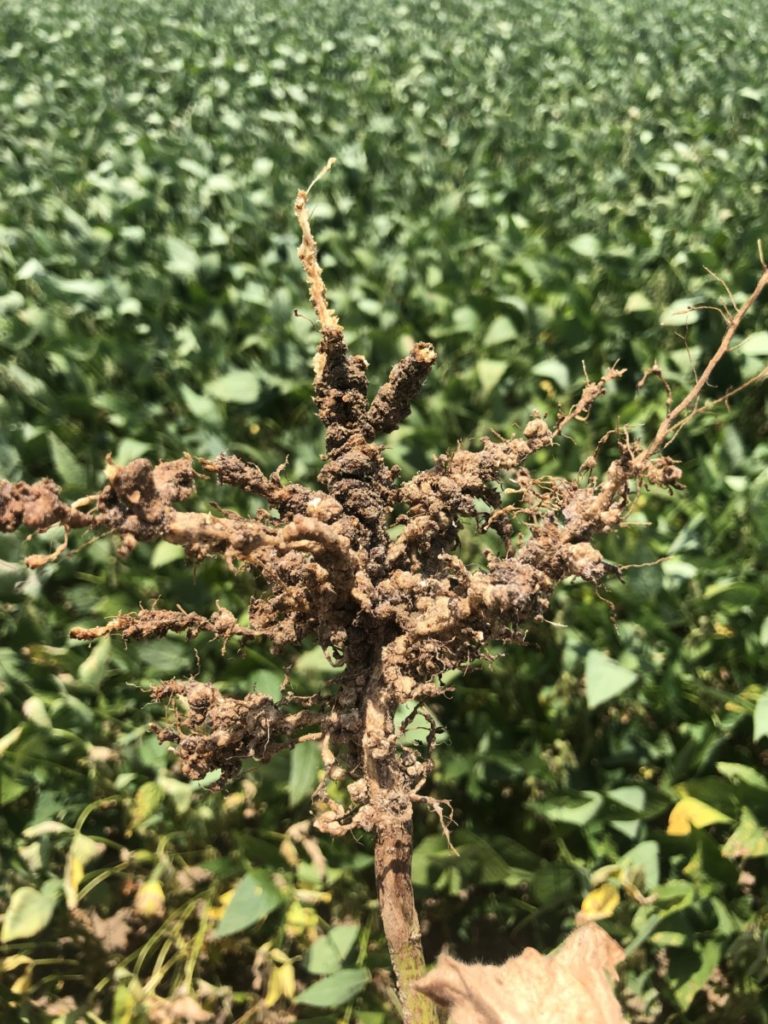The extremely hot and dry weather has brought on some unique challenges other than just inadequate soil moisture. Certain pests thrive in certain conditions, and we are seeing evidence of that in multiple crops.
Cotton
I am seeing isolated fields with two-spotted spider mite infestations in cotton. Spider mites are usually not a major issue for us, but this year dry conditions have been favorable in dryland cotton. Economic threshold is reached when 50% of plants are infested and populations are increasing. When rainfall is abundant, the plants can usually outpace any damage that the mites can cause, but in dry spells, a miticide application may be warranted. Abamectin (various products), Zeal, Portal, Oberon 2, and Comite II are all labeled for spider mite in cotton. We do not want to spray unwarranted, broad-spectrum insecticides that might flare spider mites such as pyrethroids or organophosphates. Below are pictures of severe mite damage that I have seen this week.
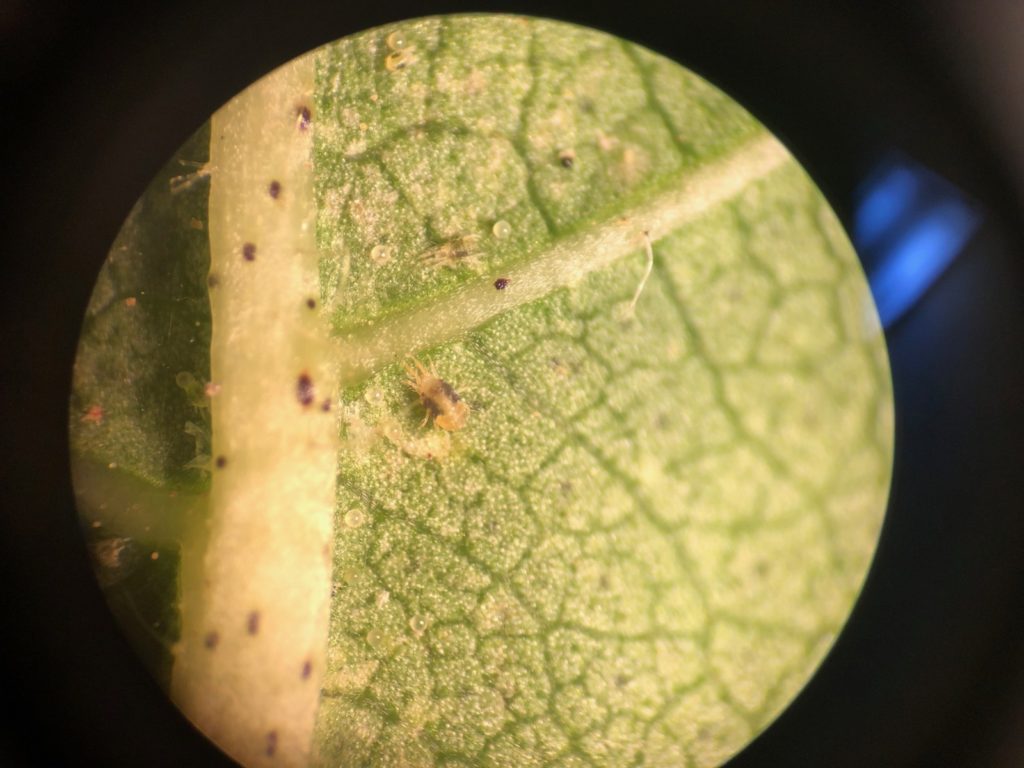
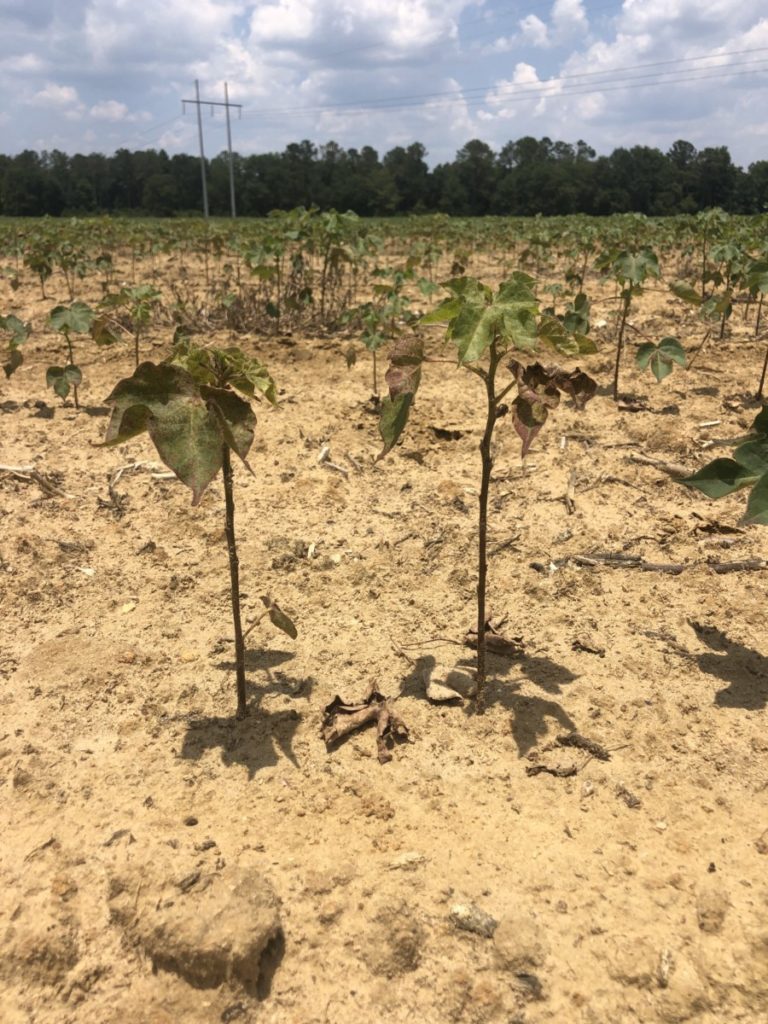
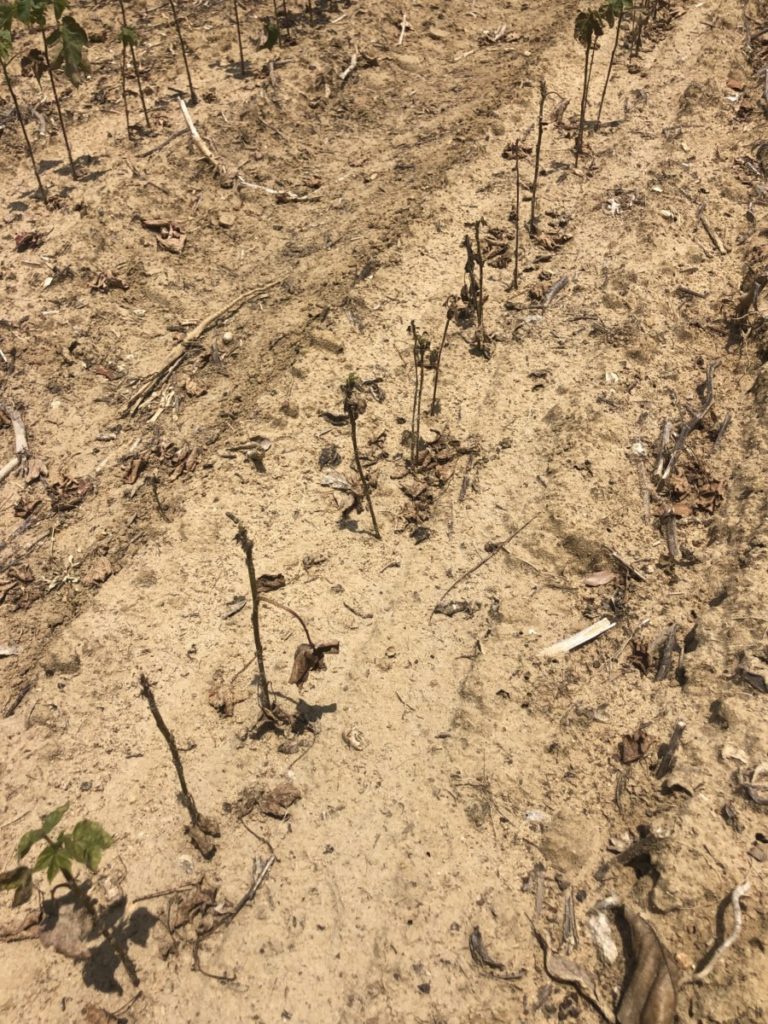
As we have a lot of cotton starting to square, we need to be on the lookout for plant bugs. We sprayed more acreage in Georgia in 2021 for plant bugs than we ever have, but we are hoping it is not a sign of the future. Plant bugs are a major pest of cotton in the Mid South, and we would like for them to stay over there. However, I swept 2 fields this week that were at treatable levels. For the first two weeks of squaring, threshold is 8 per 100 sweeps. For third week of squaring through bloom, it is 15 per 100 sweeps. You can also use a drop cloth to scout, which is actually more effective for monitoring immatures.
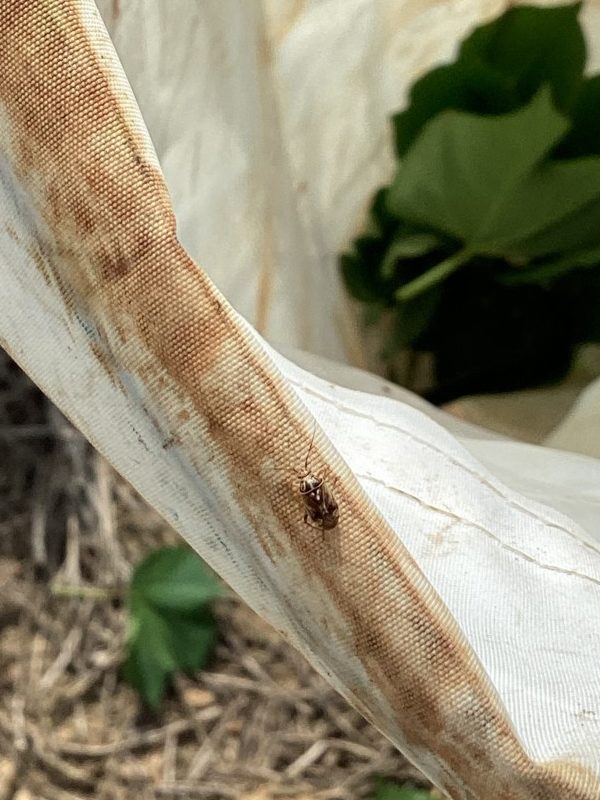
Peanuts
The biggest issue in peanuts this week is another dry weather pest, the lesser cornstalk borer (LCB). I have seen fields and have gotten reports from consultants about fields with treatable levels of LCB. I know of several fields that have already been treated as well. Vantacor and Diamond are labeled in peanut for treating LCB. If you see plants dying in the field, it is likely from LCB. LCB bore into the stem of the plant, which cuts off all water and nutrient flow from the roots and effectively kills the plant. Many times you can look at the base of the plant and see the diagnostic silk tube left behind from the LCB as well as the hole where they have entered or exited the stem. Sometimes you may actually see the culprit, either in the larvae form (which does the damage) or as the adult form of a moth flying in the field.
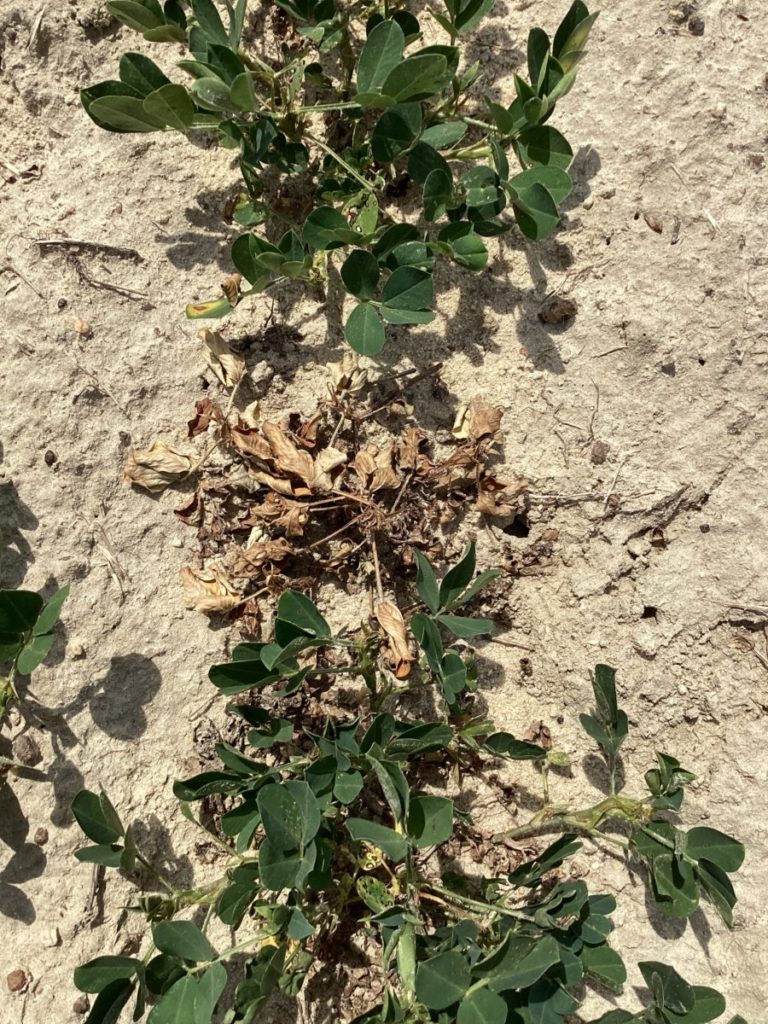
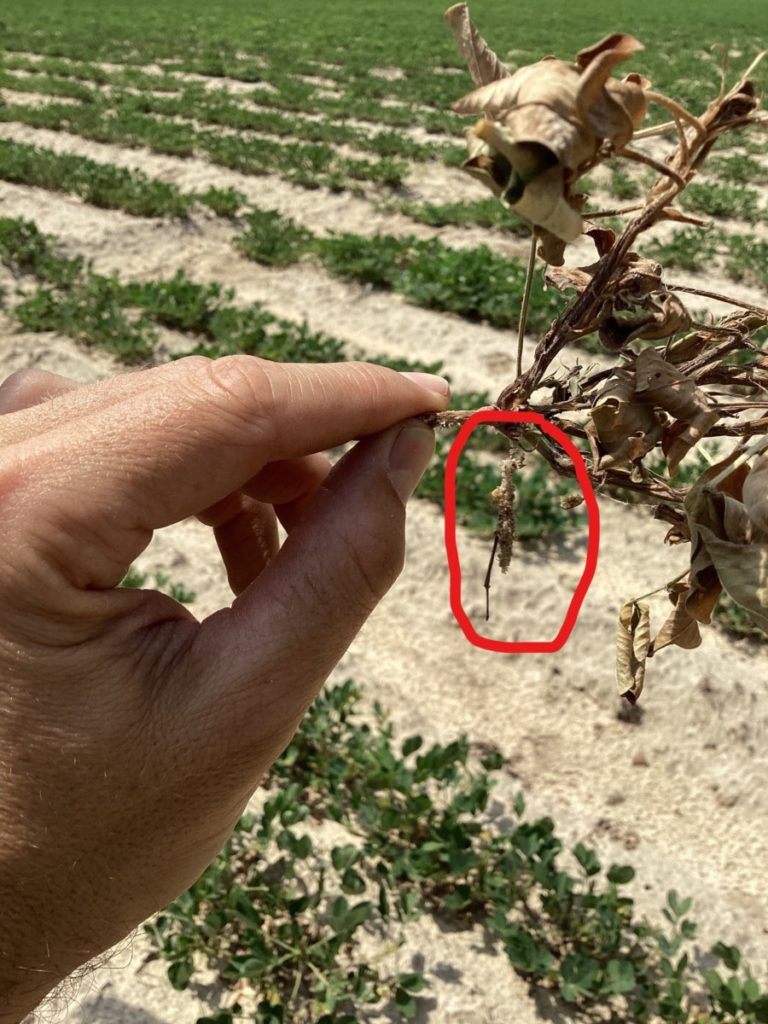
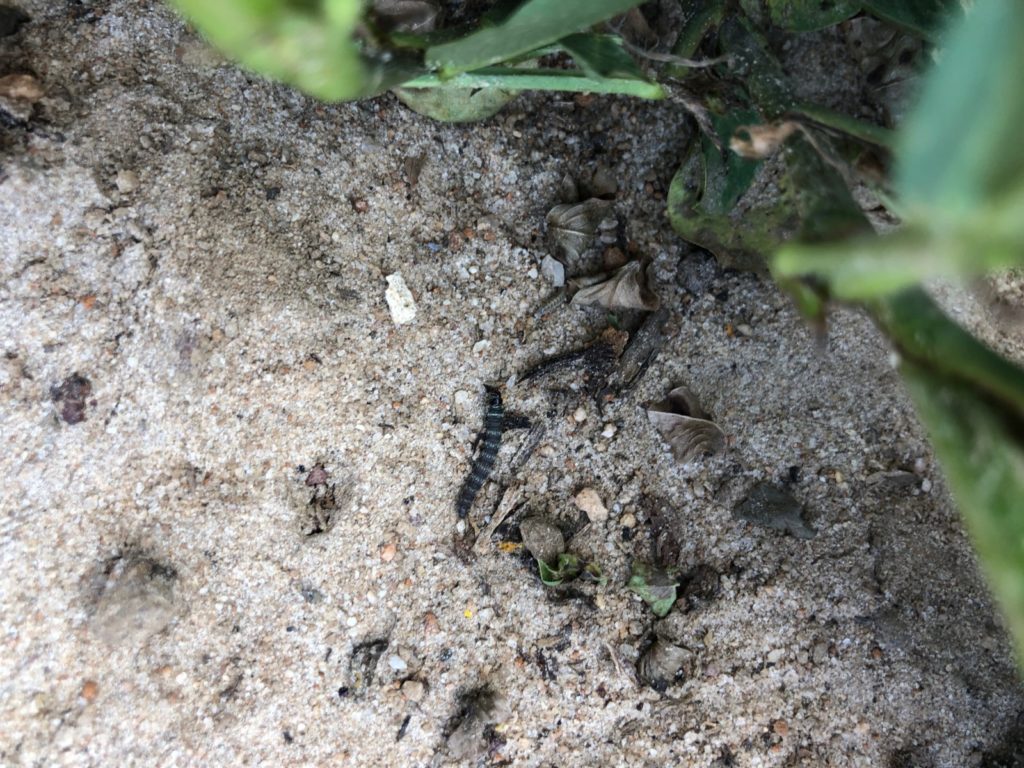
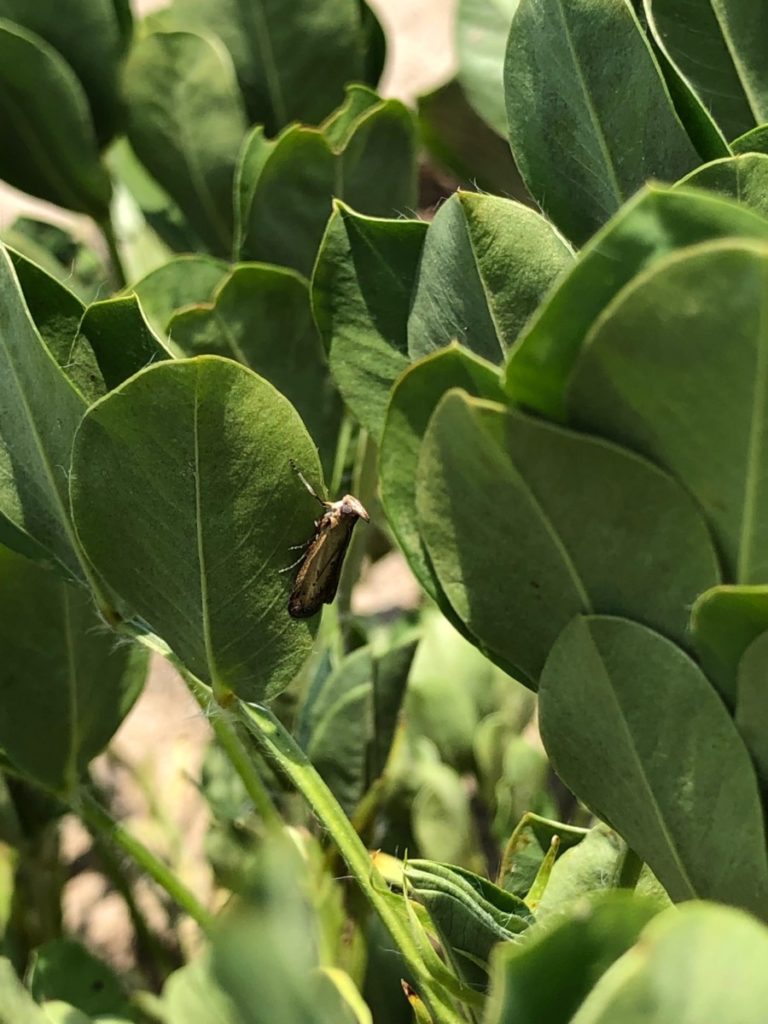
The other thing that really stood out to me in peanuts is the number of plants with tomato spotted wilt virus (TSWV). TSWV is transmitted by thrips, and the only insecticide we have that reduces TSWV in peanuts is Thimet (phorate) applied at planting. I think we will really be able to tell a difference in fields treated with or without that product due to the high number of thrips we saw earlier in the year and the number of TSWV in fields now.
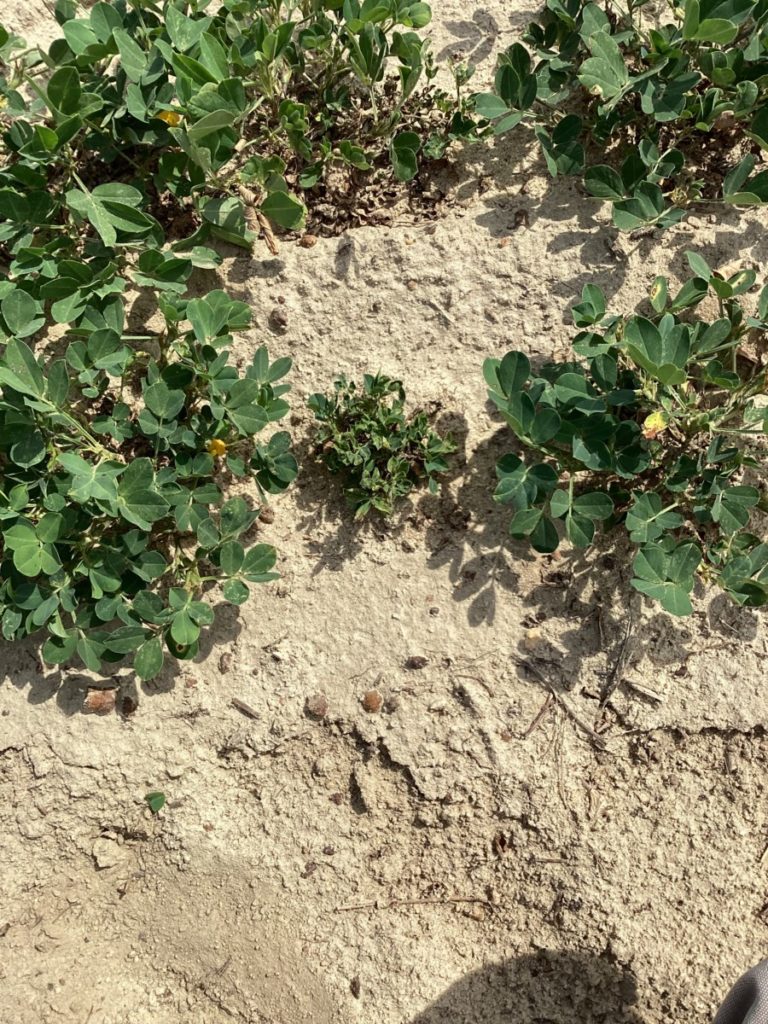
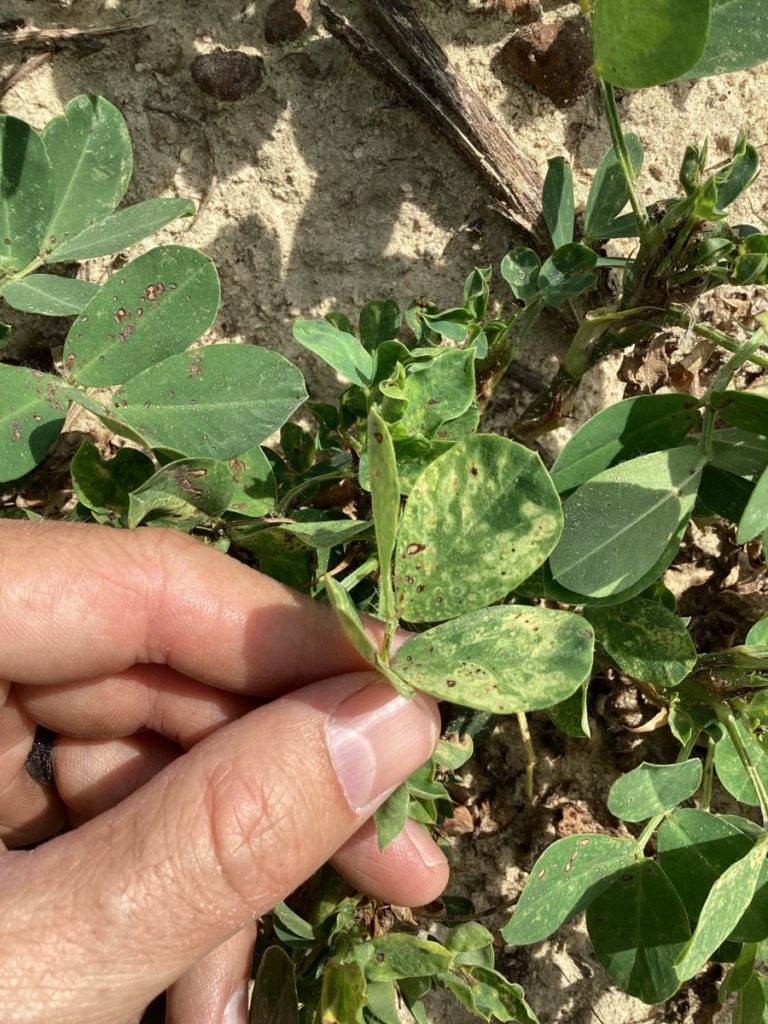
Corn
Corn is moving right along in the county. The biggest story is stink bugs and southern rust. We still have not found southern rust in Bleckley or Twiggs County, but it has been found in multiple counties in SW Georgia. I expect it to be found any day. I know a lot of growers have already sprayed a fungicide, and I think that is wise. Most who have sprayed are also including a pyrethroid for stink bugs. Due to the number I and other consultants are seeing in the field, I also think that is wise. Remember, the most crucial time to apply both a fungicide and insecticide on corn is at tassel. Stink bug damage during ear formation can completely deform the ear and cause major issues. Whereas after the ear has formed, a single hit from a stink bug only affects that individual kernel and is not nearly as harmful. However, it is still important to spray for them in the later stages.
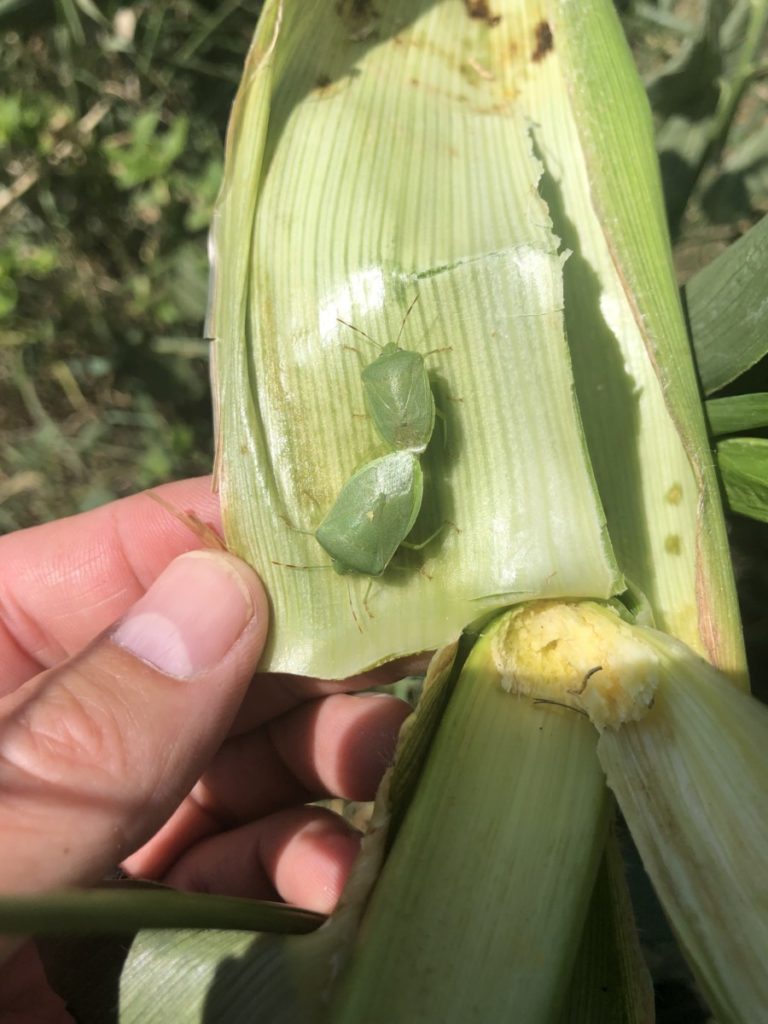
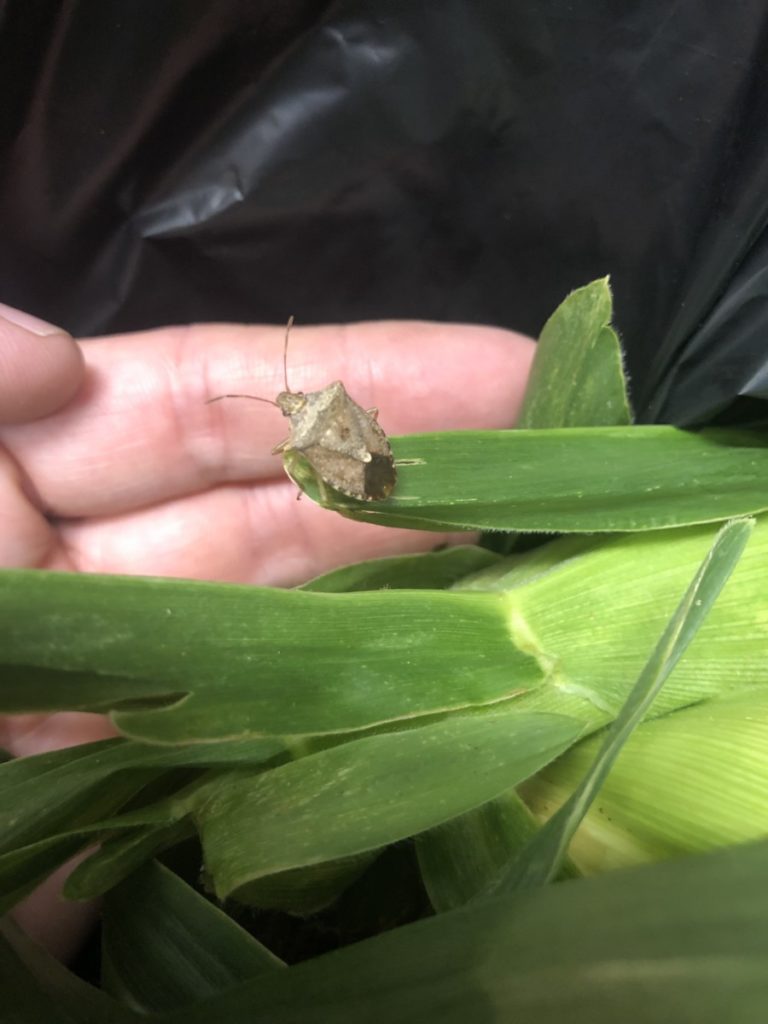
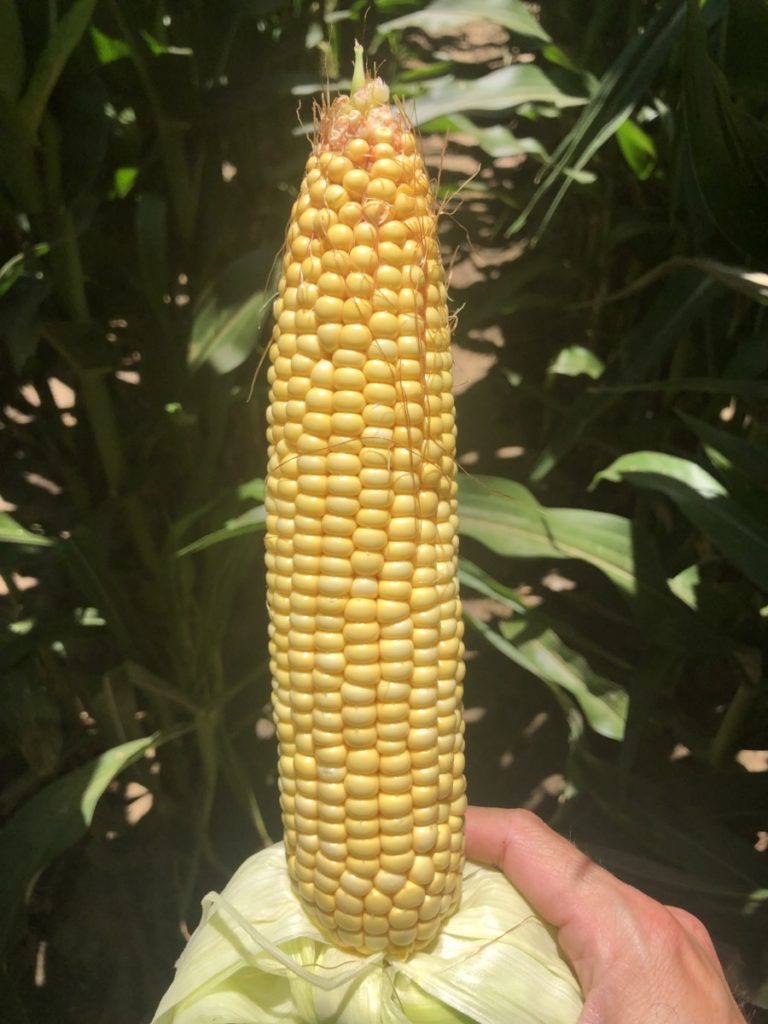
Soybeans
In dryland soybeans, lesser cornstalk borers (LCB) are wreaking havoc the same way they are in peanuts. If you have dryland beans or see plants dying in dry corners or especially in sandier soils, it very likely from LCB. If at treatable levels (10% of plants are infested with larvae), Vantacor is also labeled in soybeans.
Another interesting thing I saw in a bean field recently was caused by nematodes. I noticed a spot in a field that was dying, and upon investigation I found the diagnostic tiger striping leaf symptoms usually associated with nematodes and/or Fusarium. I proceeded to pull some plants up and found the worst root galling I have ever seen from root knot nematodes. Proper crop rotation, the use of nematicides, and/or the use of nematode-resistant varieties can help address this issue. If you have areas in the field where there is weak growth, it may pay to pull a nematode assay and see what the levels are in the field. Just because you do not see galling on the roots does not mean it cannot be nematodes. There are multiple species of nematodes that are plant-parasitic but do not create galling on the roots.
